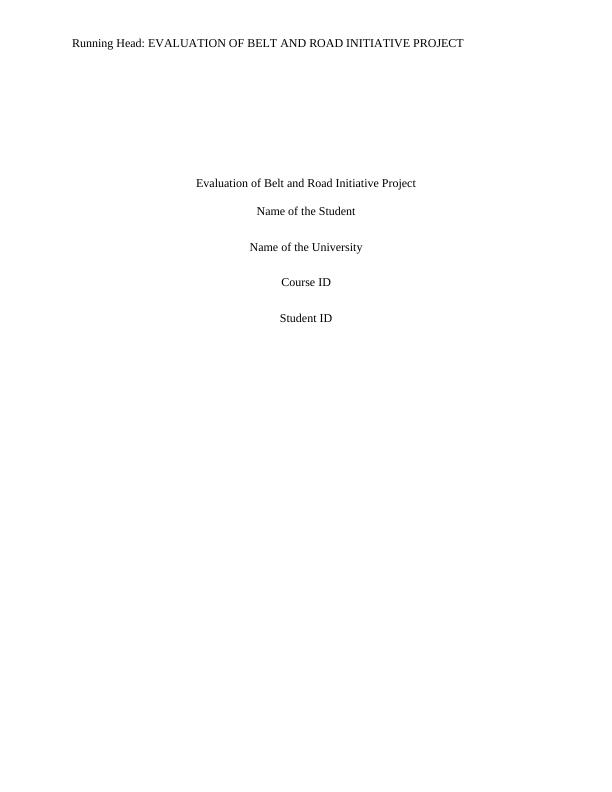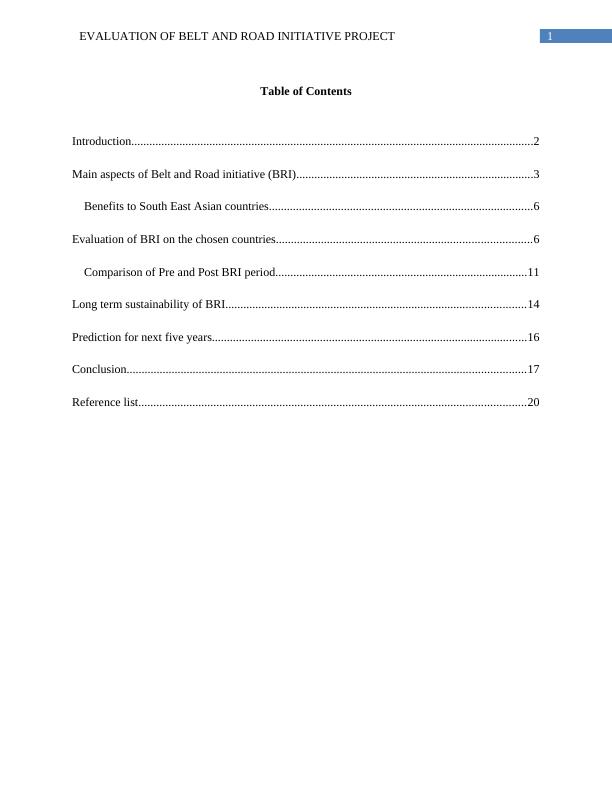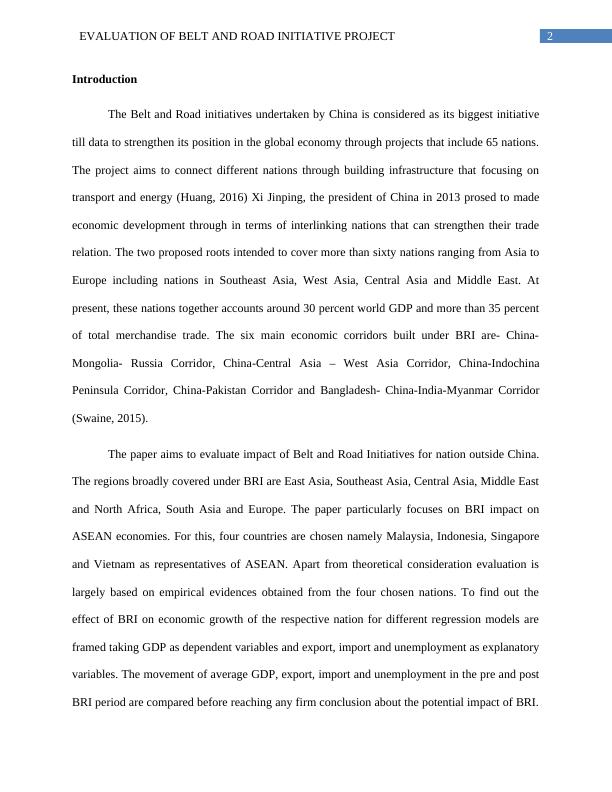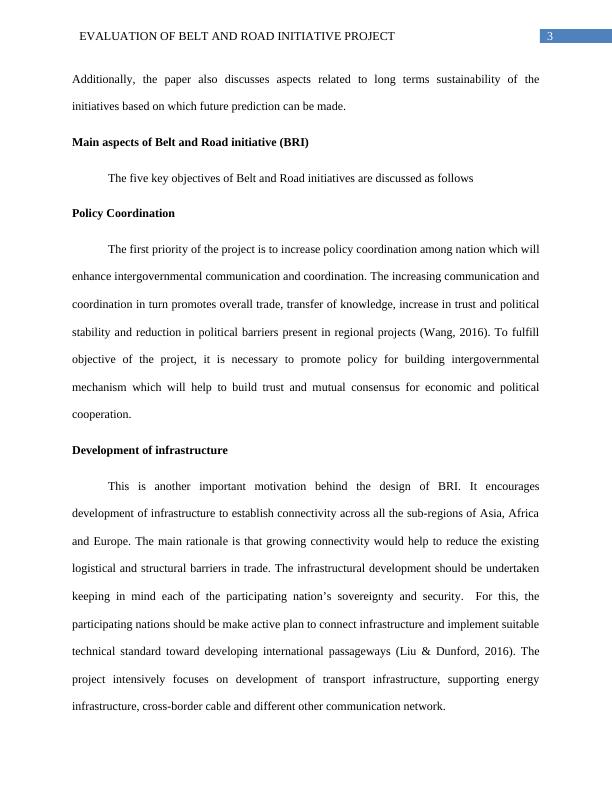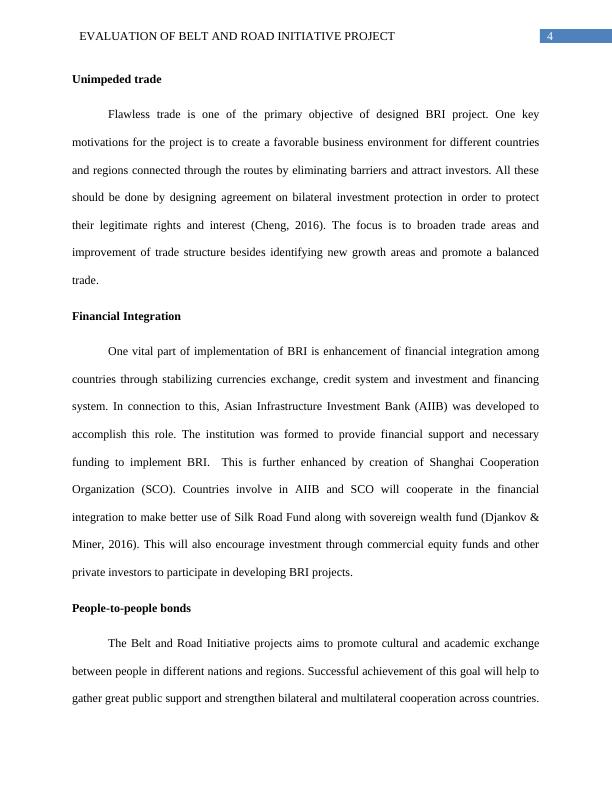Evaluation of Belt and Road Initiative Project
The Belt and Road Initiative refers to the Silk Road Economic Belt and 21st Century Maritime Silk Road, a significant development strategy launched by the Chinese government with the intention of promoting economic co-operation among countries along the proposed Belt and Road routes.
22 Pages5374 Words110 Views
Added on 2023-06-09
About This Document
This paper evaluates the impact of China's Belt and Road Initiative on ASEAN economies, particularly Malaysia, Indonesia, Singapore, and Vietnam. It discusses the main aspects of the initiative, benefits to South East Asian countries, and long-term sustainability. Regression models are used to measure the impact of BRI on economic growth of the respective nations.
Evaluation of Belt and Road Initiative Project
The Belt and Road Initiative refers to the Silk Road Economic Belt and 21st Century Maritime Silk Road, a significant development strategy launched by the Chinese government with the intention of promoting economic co-operation among countries along the proposed Belt and Road routes.
Added on 2023-06-09
ShareRelated Documents
End of preview
Want to access all the pages? Upload your documents or become a member.
Business Environment Project China 2022
|6
|1318
|14
OBOR
|16
|4027
|455
Ways used by China's Belt Road Initiative to enlarge trade and investments in South and Southeast Asia
|38
|16487
|75
Globalization and Economic Plan
|14
|3435
|17
China Policy and India Connection: Implications of Belt and Road Initiative and Border Shenanigans
|5
|1092
|199
Economic Implications of China in Africa: Incentives behind China's Belt and Road Initiative
|64
|15559
|494

